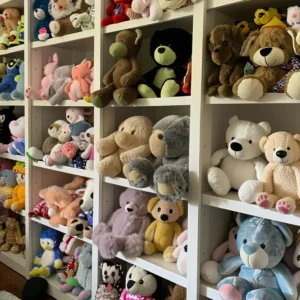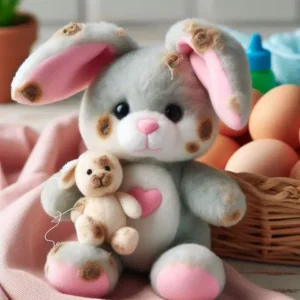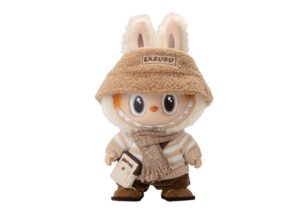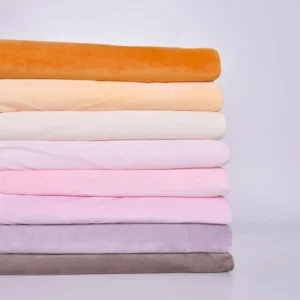Storing stuffed animals long term requires careful preparation and proper conditions to maintain their shape, cleanliness, and quality. With the right techniques, plush toys can remain fresh and undamaged for years.
Long-term storage of stuffed animals involves thorough cleaning, selecting suitable containers, controlling environment factors like humidity and temperature, and regular maintenance. Proper methods prevent damage, mold, and deformation, ensuring plush toys stay in great condition over time.
Let’s explore essential steps to store your plush toys safely and effectively.
1.What Preparations Are Necessary Before Long-Term Storage of Stuffed Animals?
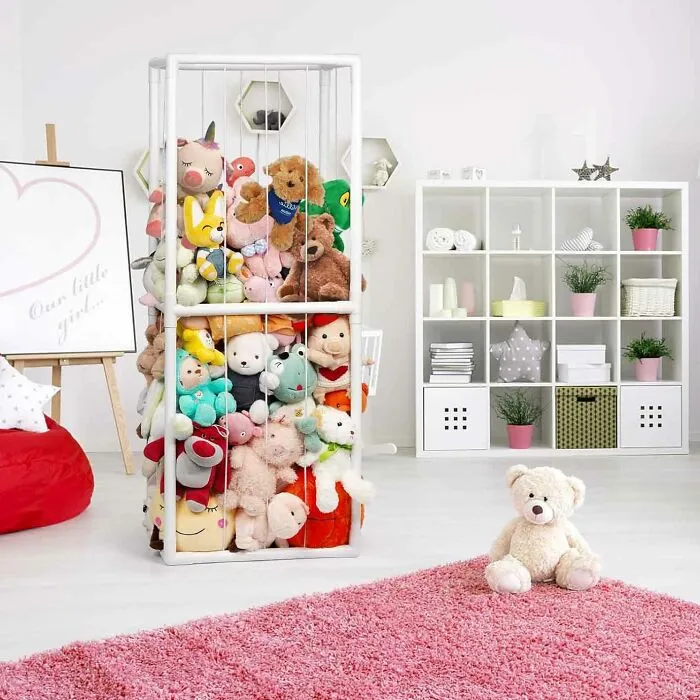
Before placing stuffed animals into storage, thorough preparation is crucial to avoid future damage and deterioration.
Cleaning the plush toys, drying them completely, and repairing any damage are vital steps to prepare stuffed animals for long-term storage. Proper preparation reduces risks of mold, odors, and physical wear.
The first step is to clean the stuffed animals carefully. Remove dust and dirt by vacuuming with a soft brush attachment or spot-cleaning stains with mild detergent.
If machine washing is possible, use gentle cycles and avoid harsh chemicals. After cleaning, ensure toys are fully dried—moisture left inside can cause mold or odors.
Repair any loose seams or tears before storage to prevent worsening damage. Consider placing silica gel packs or moisture absorbers inside or near the toys to reduce humidity.
| Preparation Step | Purpose | Tips |
|---|---|---|
| Vacuum dust removal | Remove surface dirt and allergens | Use low suction and soft brush |
| Spot cleaning | Address stains and sticky areas | Mild detergent, test on small patch |
| Complete drying | Prevent mold and odors | Air dry fully in shaded, ventilated space |
| Repair damages | Prevent worsening tears | Use needle and thread to reinforce |
| Moisture control | Reduce humidity inside storage | Include silica packets or desiccants |
Thorough preparation ensures the plush toys stay clean and intact during storage.
2.How to Choose Suitable Containers and Packaging for Extended Storage?

Selecting the right containers and packaging materials significantly impacts the preservation of stuffed animals during long-term storage.
Breathable containers like cotton bags or fabric bins combined with acid-free tissue paper help protect plush toys from dust and moisture. Avoid airtight plastic containers unless moisture control is used.
Stuffed animals need packaging that prevents dust and insects but allows airflow to avoid moisture buildup. Cotton or linen bags are ideal, as they are breathable and gentle on fabric.
Acid-free tissue paper wrapped around toys adds an extra protective layer, reducing friction and fabric degradation.
Plastic bins are acceptable if combined with moisture absorbers like silica gel. Avoid vacuum-sealing unless the toys are thoroughly dried, as compressed stuffing can lose shape and trap moisture.
| Container Type | Advantages | Considerations |
|---|---|---|
| Cotton/fabric bags | Breathable, gentle on fabric | Less protection against dust |
| Acid-free tissue paper | Protects fabric, prevents friction | Use multiple layers |
| Plastic bins | Protect from dust and pests | Add moisture absorbers |
| Vacuum-sealed bags | Space-saving | Risk of fabric compression and trapped moisture |
Proper container selection balances protection with the plush toy’s need to “breathe” during storage.
3.Which Environmental Factors Must Be Controlled for Long-Term Preservation?
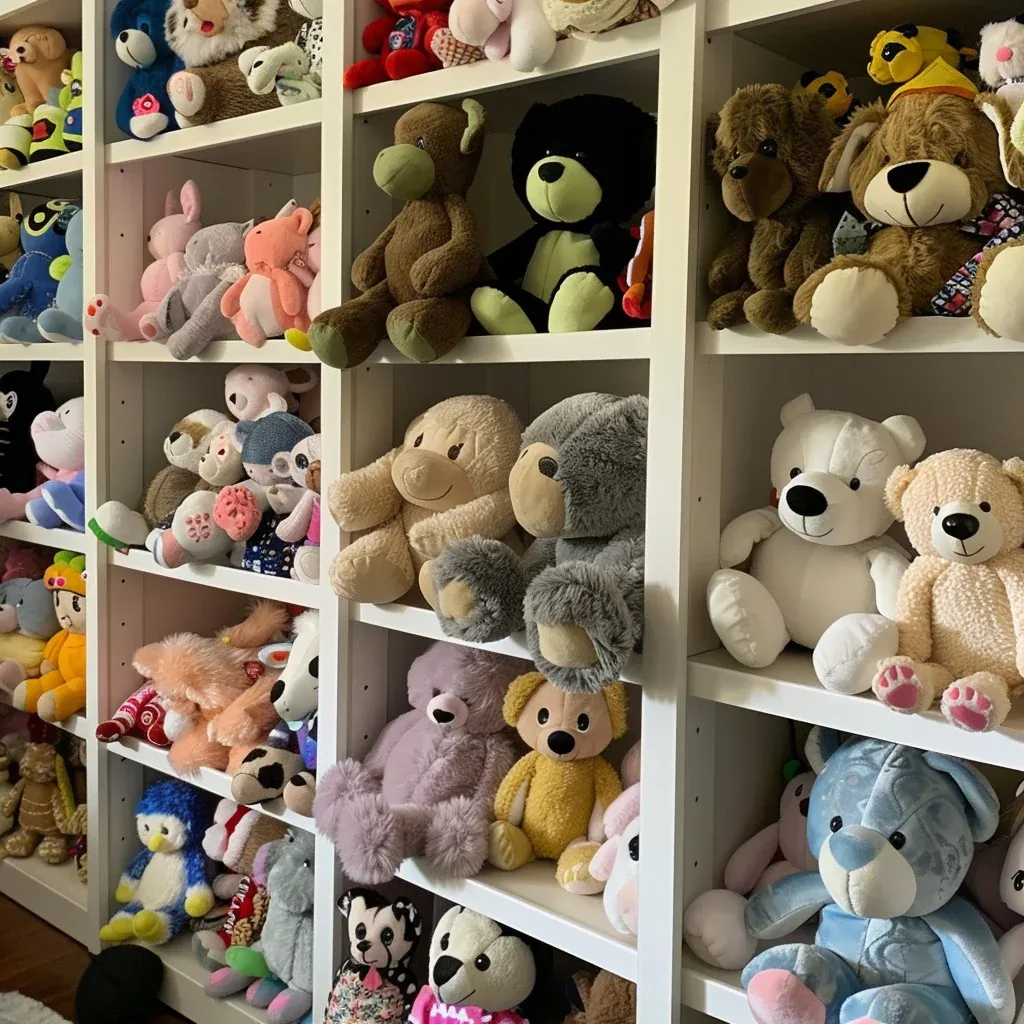
Controlling environment factors such as humidity, temperature, and light exposure is key to maintaining plush toy quality.
Stable temperatures between 15-25°C (59-77°F), relative humidity below 50%, and protection from direct sunlight are essential for long-term stuffed animal storage.
High humidity promotes mold growth and fabric deterioration. Using dehumidifiers or moisture absorbers helps keep humidity low.
Temperature fluctuations can cause fabric fibers to expand and contract, leading to damage over time. Maintaining stable room temperature avoids stress on materials.
Direct sunlight fades colors and weakens fibers. Store plush toys in dark or shaded places to preserve appearance.
| Environmental Factor | Ideal Condition | Impact if Uncontrolled |
|---|---|---|
| Temperature | 15-25°C (59-77°F) | Fiber damage, deformation |
| Humidity | Below 50% | Mold growth, odors |
| Light Exposure | Avoid direct sunlight | Color fading, fabric weakening |
| Airflow | Moderate ventilation | Prevents moisture buildup |
Monitoring these factors is vital for preserving plush toys over long periods.
4.How Does Cleaning and Maintenance Impact Stuffed Animals in Storage?

Regular cleaning and maintenance before and during storage significantly affect the plush toys’ longevity.
Removing dust and dirt before storage and periodically airing out toys prevents fabric degradation and mold growth, extending the lifespan of stuffed animals.
Before storage, thorough cleaning eliminates dirt, oils, and allergens that can attract pests or promote mold.
During storage, inspect toys every few months. Gently brush off dust or use a vacuum with a soft brush. Airing toys by exposing them to indirect sunlight or fresh air for short periods helps eliminate odors and moisture.
Neglecting maintenance can cause irreversible damage, discoloration, or unpleasant smells.
| Maintenance Activity | Frequency | Benefits |
|---|---|---|
| Dust removal | Before storage and every 3-6 months | Prevents dirt buildup, allergies |
| Airing out | Every 6 months | Reduces odors and moisture |
| Repair checks | Before storage and periodically | Avoids worsening damage |
Ongoing maintenance is a small effort that greatly benefits long-term storage quality.
5.What Are the Best Practices for Preventing Damage and Deformation Over Time?

Preventing physical damage and shape deformation requires proper handling and supportive storage.
Avoid compressing stuffed animals tightly, provide sufficient padding, and store toys in upright or natural positions to maintain shape and fabric integrity.
Stuffed animals should never be crushed under heavy objects. Overpacking can flatten stuffing and distort form.
Using custom-sized boxes or adjustable fabric bins ensures toys have space to retain their shape.
Supporting limbs or protruding parts with soft inserts helps prevent bending or creasing.
Rotation of stored toys (see next section) also reduces long-term pressure damage.
| Practice | Purpose | Tips |
|---|---|---|
| Avoid tight compression | Prevents stuffing flattening | Use boxes sized to toy volume |
| Support delicate parts | Maintains natural shape | Use foam or tissue padding |
| Store upright | Reduces fabric stress | Arrange standing or sitting |
| Avoid stacking heavy items | Prevents crushing | Store heavy items separately |
Applying these practices preserves plush toys’ appearance and tactile feel.
6.How to Monitor and Rotate Stored Plush Toys to Ensure Longevity?

Ongoing monitoring and rotating plush toys in storage are critical for long-term preservation.
Regularly inspecting and gently repositioning stored stuffed animals prevents uneven pressure, reduces dust accumulation, and allows early detection of damage or mold.
Check stored toys every 3-6 months. Look for signs of discoloration, fabric weakening, or moisture.
Rotate toys so pressure points shift, minimizing permanent deformation.
Remove toys briefly for cleaning or airing. This process also allows you to refresh moisture absorbers or adjust storage conditions.
| Activity | Frequency | Benefits |
|---|---|---|
| Visual inspection | Every 3-6 months | Detect damage early |
| Rotation of position | Every 6 months | Prevents deformation |
| Cleaning and airing | Every 6 months or as needed | Maintains freshness and hygiene |
Consistent monitoring ensures plush toys remain in excellent condition for years.
Conclusion
Proper preparation, packaging, environmental control, and ongoing care are essential to successfully store stuffed animals long term.
For professional guidance on plush toy storage and manufacturing, contact me at [[email protected]] or visit [https://plushtoyinchina.com].




